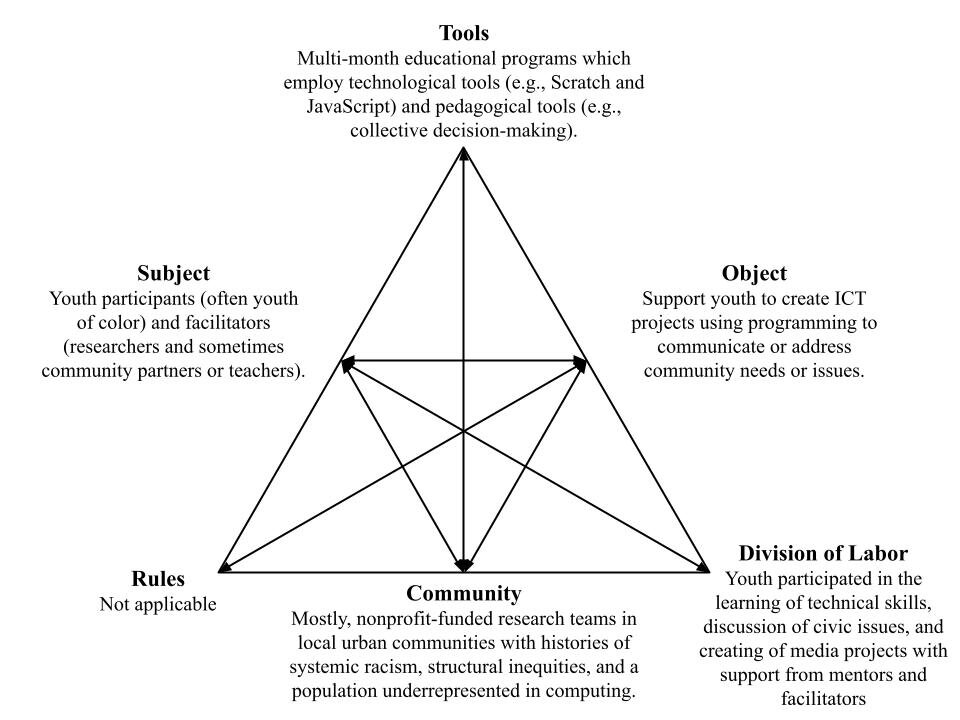What practices are educators already using to cultivate civic engagement alongside computational skills in young people? What areas could future research and educational work on this look into?
In order to answer these questions, we reviewed six youth programs which include both computing and civic education. These six programs were analyzed according to five factors: subjects, objects, tools, community, and division of labor. These five factors are from an academic framework known as cultural-historical activity theory (CHAT). The six programs were chosen based on an academic framework known as critical computational literacy (CCL).
We found that programs typically start with facilitators engaging youth in discussions of local civic issues. Then, youth lead the process of choosing a topic and designing a computing or media project to address it. Finally, facilitators support youth in developing the necessary programming or media skills to execute their ideas. Under this model, programs foreground developing youths’ civic skills, such as critical thinking, communication, and collective decision-making around issues relevant to them. Computing skills, such as programming in Scratch or Javascript, are developed in order to support projects developed around civic issues.
Figure 1. The summary of the examined CCL programs following the CHAT framework.
A summary of the six programs according to the five CHAT factors is presented in Figure 1. We found that these programs’ goals are typically to support youth in creating computing projects that attempt to publicize or solve local community issues. They engage youth of color as participants and some combination of researchers, teachers, or community partners as facilitators. We found that most of these programs took place outside of school and lasted several months. Programs were mostly led by nonprofit-funded research teams in local urban communities with histories of systemic racism and structural inequities. Youth participants took on a number of roles across programs and project phases. During project brainstorming sessions, youth participants were typically encouraged to lead discussion of civic issues, topic selection, and project design. Since many programs were intended for novice programmers, their curricula included learning media and computer skills. Facilitators took the reins to lead these computing lessons, but geared them towards helping youth develop their projects.
In addition to existing practices, our case review also suggests areas future research and educational work with CCL could look into, such as making the process of choosing project topics as a civic practice, expanding what participants can create and who can participate, as well as incorporating different civic skill sets. We discuss these, along with connections to existing CSG-Ed practices, at length in the full paper
Citation: Junnan Yu, Janet Ruppert, Ricarose Roque, and Ben Kirshner. 2020. Youth civic engagement through computing: cases and implications. ACM Inroads 11, 4 (December 2020), 42–51. DOI:https://doi.org/10.1145/3432727

